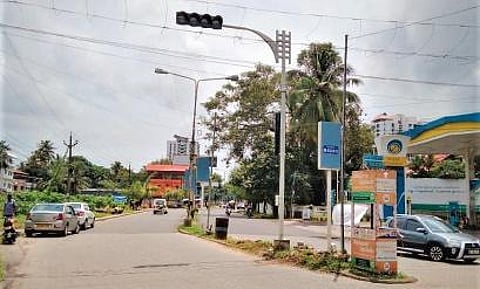

BENGALURU: In the upcoming months, Bengaluru will make notable changes to traffic management, as traffic violations will be sent as QR codes for easy identification. As part of the Nirbhaya Fund’s Safe City Project, the city is adopting advanced measures, including a command centre and 7,500 CCTV cameras in 3,000 key areas. As part of the project, manual signals will be replaced citywide, making room for a more efficient and technology-driven urban landscape, encompassing 50 safety islands and 158 viewing centres.
Joint Commissioner of Police, Traffic, MN Anucheth told TNIE that ‘Adaptive Traffic Control Signals’ (ATCS) are set to be implemented across 165 junctions in the city, which will operate through Artificial Intelligence (AI). The AI will autonomously determine traffic time, load and time intervals between multiple junctions for efficient traffic management throughout the city. The ATCS, which will be in operation in another eight months, has been planned to minimize waiting time, and achieve corridor-level traffic management.
As an integral part of the Safe City project, advanced technology will be employed to send traffic violations through QR codes. At present, violators must log in online and enter their vehicle number to access traffic violation information. However, within the next eight months, a detailed QR code will be sent, containing comprehensive violation information, the senior officer added.
To monitor traffic flow and enhance traffic management, city traffic police also introduced Actionable Intelligence for Sustainable Traffic Management (ASTraM). The intelligent traffic engine will offer comprehensive insights into road traffic conditions in the city. This will include features such as congestion alerts, incident reporting through a mobile application BOT, special event management, and dashboard analytics. The initiative also incorporates ambulance tracking systems to enhance coordinated ambulance movement across the city. With this, the control room will monitor registered ambulance routes, triggering alerts if stuck in traffic for over 120 seconds. The app will provide drivers with the shortest route and real-time traffic updates. Additionally, it features an SOS button for immediate intervention.
Furthermore, to monitor traffic during peak hours, 10 drone cameras are deployed citywide with the live feeds displayed on the Traffic Management Centre’s video wall.